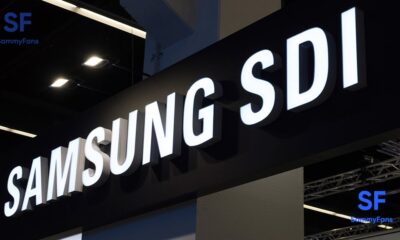News
Mint Mobile is the newest victim of data breach: User names, phone numbers and more exposed

Mint Mobile confirmed that it has suffered from a data breach, which exposed users’ names, phone numbers, and more. Last Friday, affected consumers received an email, informing them about the data breach faced by the network carrier.
Later on, a Mint Mobile carrier official confirmed the development while directing people to contact customer support at 949- 704-1162. This number was set up to answer “specific questions” about the breach, the email further reads.
Follow our socials → Google News | Telegram | X/Twitter | Facebook | WhatsApp
In addition, Mint Mobile revealed that customer names, phone numbers, SIM and IMEI numbers, and a “brief description” of the plan were compromised. However, subscribers aren’t required to take any action to secure their account.

// Via
News
Pure blood HarmonyOS Next arriving to rival Android, iOS

Huawei is set to launch pure blood HarmonyOS, the HarmonyOS Next later this month. While HarmonyOS supports Android apps, the HarmonyOS Next won’t be the same. The company is setting the stage to rival Android and iOS dominance.
Chen Xinxin, general manager of HarmonyOS industry solutions confirmed (via HC) HarmonyOS Next launching later this month. The self-made operating system will help Huawei compete against Google and Apple in the Chinese market.
Apple’s iOS is limited to iPhone, while Google’s Android is based on many skins. Leading smartphone vendors such as Samsung use Android on their devices. HarmonyOS Next will be promoted as the third leading mobile OS.
Per reports, HarmonyOS Next is “entirely independently developed and autonomous.” It would be a big blow to Apple and Google in the Chinese market. The success rate will decide whether its global arrival will take place.
Back in 2019, Huawei introduced the HarmonyOS operating system. It was accused of being an Android-based skin with radical UI tweaks. Support of Android apps was necessary as Google has a vast application ecosystem.
Huawei gradually expanded its work on the operating system. The company grew its application ecosystem through app developers. Now, we are hearing native apps are developed or under development for the latest iteration.
Following the US ban, Google pulled Android’s access from Huawei. The company has been facing immense challenges since then. However, it didn’t give up, and as a result, a competitive product is ready for a striking debut in the market.
Reports say that HarmonyOS runs on more than 900 million devices with 2.54 million developers. Huawei also plans to invest a massive $987 million to “incentivise” HarmonyOS native apps and technical services and to build out the HarmonyOS ecosystem.
News
iPhone 16’s Camera Control on Samsung Galaxy: Awaiting the masterstroke

Camera Control may have caught your attention, which debuted in the iPhone 16. Unlike Dynamic Island, Apple’s Camera Control key on iPhone 16 is a must on Samsung Galaxy. I am eagerly waiting for this masterstroke, honestly.
iPhone 16’s Camera Control key will be beneficial on Samsung Galaxy. The company’s Galaxy S flagships are known for their exceptional camera capabilities. A dedicated button will improve the user experience by 10 times.
Apple’s Camera Control introduces new ways to operate mobile cameras. Additionally, it helps users quickly access visual intelligence to learn about objects or places around them faster than ever before.
It’s a dedicated key integrated with Apple’s fancy iOS software. It’s a touch feedback key in the middle frame next to the power button. This underrated addition significantly elevates the camera experience on the iPhone 16 lineup.
Camera Control on a future Samsung should be welcomed by most Galaxy fans. Zooming capabilities, Nightography, and OIS of Galaxies are far ahead of Apple iPhones. Notably, Sony-made camera flagships also bring a capture button.
One UI 6 replicated several features from Apple’s iOS 17. I can’t assume Samsung will be criticized for bringing an iPhone-inspired Camera Control button on a future Galaxy. The company should consider innovating to uplevel Galaxy’s camera experience.
Image – Apple
Camera Control is a tactile switch, which powers the click experience. Besides, the key also has a high-precision force sensor, making the light press gesture, and a capacitive sensor – unlocking touch interactions.
The functionality is also able to trigger the camera, take a photo, and record video. iPhone 16 users can adjust controls such as zoom, exposure, or depth of field. As a result, users can compose a stunning photo or video by sliding their finger.
News
Is Google set to ditch Samsung for 3nm Tensor G5 production?
Google Pixel 10 series will likely use 3nm Tensor G5 made by TSMC. The company is swiftly working to switch the Tensor producer for the next-gen SoC. Starting with the Tensor G1, Samsung has been fabricating Pixel-exclusive chips.
BusinessKorea reports that Google is likely to switch Tensor G5 production from Samsung to TSMC next year. The report suggests that the Tensor G5 will be used in the Pixel 10 series and is expected to be produced using TSMC’s 3nm process.
Samsung retained Google for the production of the Tensor G4 processor last year. Recent developments suggest that the Tensor G5 would not be produced at Samsung Foundry as a switch to Taiwan’s TSMC is highly likely.
Google and TSMC have entered the full-scale mass production phase of the Tensor G5. Despite utilizing its own developed Tensor, Google’s Pixel phones have always been criticized for performance and efficiency issues.
“TSMC has gained an advantage over Samsung in the 3nm process.”
In a situation where Samsung urgently needs to secure Foundry clients, losing Google to TSMC could disrupt its order strategy. Samsung Elec is also considering solely using Snapdragon 8 Gen 4 which would also benefit TSMC.
Samsung Foundry’s low yield rate is the biggest reason for Google to opt for TSMC. Exynos 2500 is already facing release uncertainty, and the departure of Google would significantly harm Samsung Foundry’s Mobile AP business.
Beyond Tensor G5, Google is rumored to produce Tensor G6 using TSMC’s 2nm process. It will be a huge leap in the Pixel segment’s AP strategy. Pixel 11 may be the early entry to ship with a 2nm process-based chipset variant.














